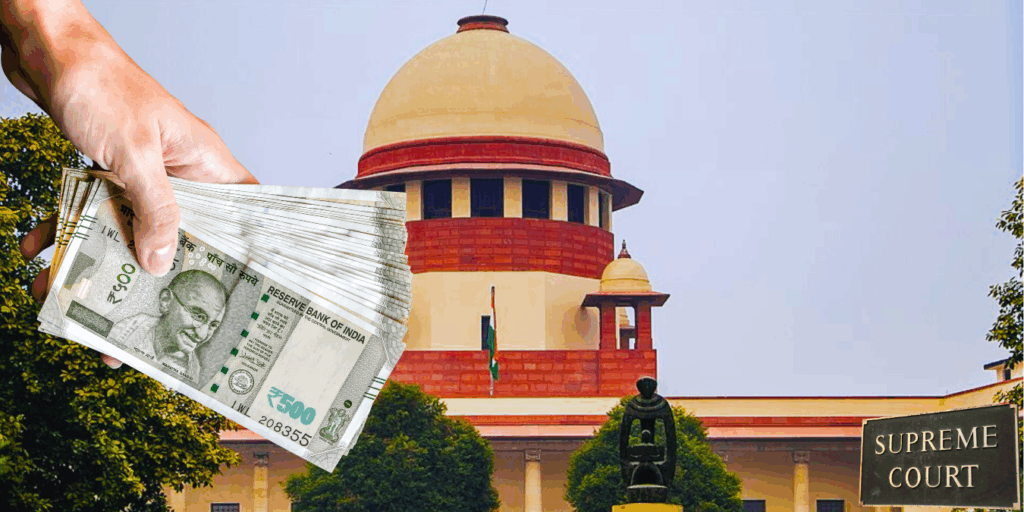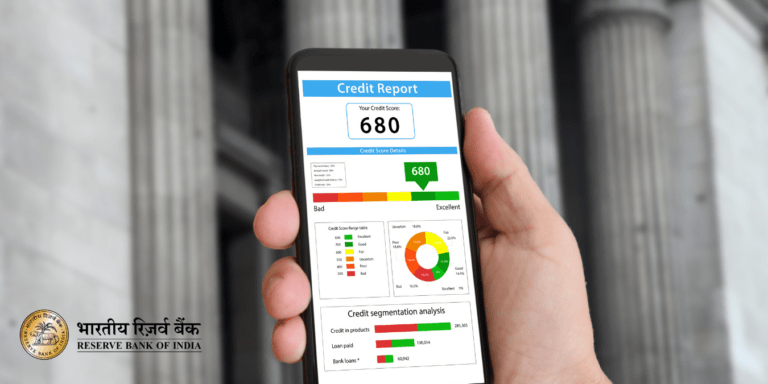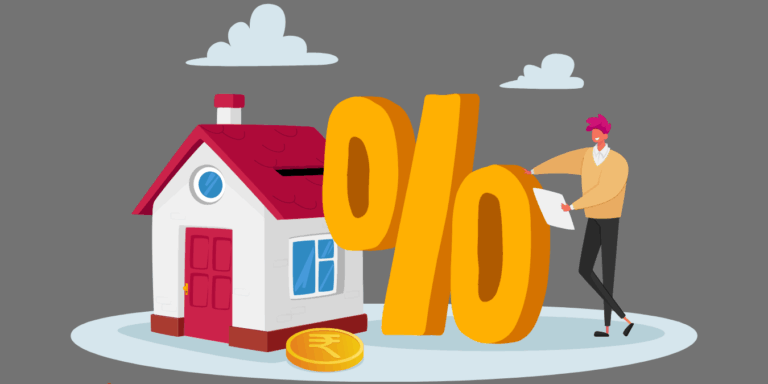
“The benefits of depositing extra amounts towards principal on your EMI and learn how to prepay your loan effectively. Get the latest data and expert insights on loan prepayment in India, and take control of your finances today with our comprehensive guide.”
Whether it’s a home loan, personal loan, or car loan, the equated monthly instalment (EMI) is a familiar term. But what if you have surplus funds and want to pay more than your EMI? Can this additional amount be deposited directly towards the principal? And more importantly, what are the benefits of doing so? This comprehensive guide answers these questions with the latest data, practical insights, and expert tips tailored for Indian borrowers.
With rising interest rates, evolving lending policies and a growing focus on financial independence, understanding how to optimize your loan repayment strategy is crucial. This blog post dives deep into the mechanics of prepaying your loan principal, its feasibility in India, and the tangible advantages it offers. Let’s explore how you can save money, reduce your loan tenure, and achieve financial freedom faster by leveraging this smart repayment option.
What Is EMI and How Does It Work?
Before we dive into the specifics of paying an additional amount over your EMI, let’s establish a clear understanding of what EMI entails. EMI, or Equated Monthly Instalment, is a fixed monthly payment you make to repay a loan over a specified tenure. It comprises two components:
- Principal Amount: The original loan amount you borrowed.
- Interest: The cost of borrowing, calculated based on the interest rate and outstanding principal.
For example, if you take a home loan of ₹50 lakhs at an interest rate of 8.5% per annum for 20 years, your EMI might be around ₹43,391 (calculated using an EMI calculator. In the initial years, a larger portion of this EMI goes towards interest, while the principal repayment increases over time. This is due to the reducing balance method, widely used by Indian banks like SBI, HDFC, and ICICI.
But what happens when you want to pay more than this fixed EMI? Can that extra amount directly reduce your principal? Let’s find out.
Can You Pay an Additional Amount Over EMI Towards the Principal?
The short answer is yes, in most cases, you can pay an additional amount over your EMI and have it credited towards your loan’s principal. However, this depends on your lender’s policies and the type of loan you’ve availed. Here’s how it works in the Indian context:
1. Lender Policies on Prepayment
Most Indian banks and Non-Banking Financial Companies (NBFCs) allow borrowers to make part-prepayments—additional payments over and above the EMI. These payments are typically adjusted against the outstanding principal, reducing the loan balance. For instance:
- Reserve Bank of India (RBI) Guidelines: In 2014, the RBI mandated that banks cannot charge prepayment penalties on floating-rate home loans. This rule remains in effective and making it easier for borrowers to prepay without extra costs.
- Fixed-Rate Loans: Some lenders may impose a prepayment penalty (usually 1-2% of the prepaid amount) on fixed-rate loans. Always check your loan agreement or consult your lender.
2. Types of Loans
- Home Loans: Banks like SBI, HDFC, and PNB Housing Finance allow part-prepayments, which are credited to the principal. For under-construction properties, prepayments may apply only after full disbursement.
- Personal Loans: Prepayment options vary. For example, Bajaj Finance and Axis Bank often permit it, but some NBFCs may restrict prepayments or charge fees.
- Car Loans: Most car loan providers, such as ICICI Bank, allow prepayments towards the principal, though terms differ.
3. How to Make the Payment
To deposit an additional amount towards the principal:
- Inform your lender in writing or via their online portal, specifying that the extra payment should reduce the principal.
- Use net banking, NEFT, or visit a branch to make the payment.
- Request an updated amortization schedule post-payment to confirm the adjustment.
Digital banking platforms like SBI YONO, HDFC NetBanking, and apps from NBFCs (e.g., Bajaj Finserv) have simplified this process, often allowing you to allocate prepayments directly to the principal with a few clicks.
Benefits of Depositing an Additional Amount Towards the Principal
Paying more than your EMI and directing it to the principal offers several financial advantages. Let’s break them down with real-world examples and the latest data.
1. Reduced Interest Burden
Since interest is calculated on the outstanding principal, reducing it early lowers the total interest you pay over the loan tenure.
Example:
- Loan Amount: ₹30 lakhs
- Interest Rate: 8.5% p.a.
- Tenure: 20 years
- EMI: ₹26,034
- Total Interest (without prepayment): ₹32,48,160
If you pay an additional ₹1 lakh towards the principal in the 2nd year:
With home loan rates hovering between 8.5% and 9.5% (per SBI and HDFC data), even small prepayments can yield significant savings.
2. Shorter Loan Tenure
Prepaying the principal can reduce your loan tenure if you keep the EMI unchanged. This means you become debt-free faster.
Example:
- Same ₹30 lakh loan, 20-year tenure.
- Prepay ₹2 lakhs in the 5th year.
- Original Tenure: 240 months
- New Tenure: ~210 months
- Time Saved: 30 months (2.5 years)
For young professionals in India (aged 25-35), who form 60% of home loan borrowers (per a 2024 CRISIL report), this accelerates financial freedom.
3. Lower EMI Option
Alternatively, you can keep the tenure unchanged and reduce your monthly EMI, easing cash flow.
Example:
- Prepay ₹2 lakhs on the ₹30 lakh loan.
- Original EMI: ₹26,034
- New EMI: ~₹24,800
- Monthly Savings: ₹1,234
This is ideal for salaried individuals facing rising living costs in metro cities like Mumbai and Bengaluru.
4. Improved Financial Flexibility
Reducing your loan burden enhances your disposable income or savings potential. With India’s inflation rate at 5.5% (RBI estimates), prepaying loans helps you stay ahead of rising costs and invest in wealth-building avenues like mutual funds or fixed deposits.
5. Enhanced Credit Score
Timely prepayments signal financial discipline, potentially boosting your credit score. As per CIBIL’s 2024 data, 78% of borrowers who prepaid loans saw a 20-50 point increase in their scores within 6 months, improving eligibility for future credit.
6. Tax Benefits (For Home Loans)
For home loans, principal repayment qualifies for tax deductions under Section 80C (up to ₹1.5 lakhs annually). Prepaying accelerates principal reduction, maximizing tax savings over time. With the Union Budget retaining this limit, it’s a compelling incentive.
Latest Data and Trends in India
To provide context, here’s the latest data shaping loan prepayment trends in India:
- Interest Rates: Home loan rates range from 8.5% (SBI) to 9.5% (private banks), per RBI’s repo rate of 6.5%.
- Loan Growth: Personal loans grew by 14% and home loans by 12% in FY 2024-25 (RBI Financial Stability Report).
- Prepayment Uptake: A 2024 PNB Housing survey found 35% of borrowers made part-prepayments in the last year, up from 28% in 2023, driven by higher disposable incomes.
These trends underscore the growing popularity of prepaying loans as a wealth-management strategy.
Things to Consider Before Prepaying Your Loan
While the benefits are clear, prepaying isn’t a one-size-fits-all solution. Here are key factors to evaluate:
1. Prepayment Charges
Check for penalties, especially on fixed-rate loans. For instance, ICICI Bank charges 2% on personal loan prepayments within 12 months.
2. Opportunity Cost
Could your surplus funds earn more elsewhere? Fixed deposits offer 6-7% returns, while equity mutual funds average 12-15% annually (per AMFI data). Compare this with your loan’s interest rate.
3. Liquidity Needs
Ensure prepayments don’t strain your emergency fund. Financial advisors recommend maintaining 6-12 months of expenses in liquid assets.
4. Loan Stage
Prepaying early in the tenure (first 5-7 years) maximizes interest savings, as the interest component is higher initially.
How to Strategize Prepayments
Here’s a step-by-step guide for Indian borrowers:
- Review Your Loan Agreement: Confirm prepayment terms and charges.
- Use an EMI Calculator: Tools like Dailyfinancial, BankBazaar or Paisabazaar’s calculators show how prepayments affect tenure or EMI.
- Start Small: Begin with lump sums like bonuses or tax refunds (e.g., ₹50,000-₹1 lakh).
- Automate Savings: Set aside 10-20% of your income monthly for prepayments.
- Consult Your Lender: Ensure the extra amount reduces the principal, not future EMIs, unless that’s your goal.
Real-Life Case Study: Prepayment in Action
Meet Priya, a 32-year-old IT professional from Bengaluru. In 2023, she took a ₹40 lakh home loan at 8.75% for 20 years (EMI: ₹35,368). In 2025, after a promotion, she prepaid ₹3 lakhs towards the principal.
- Result: Tenure dropped from 18 years remaining to 15 years.
- Interest Saved: ₹4.2 lakhs.
- Tax Benefit: ₹45,000 extra under Section 80C over 3 years.
Priya’s story highlights how prepayments align with India’s rising middle-class aspirations.
Is Prepaying Your Principal Worth It?
Paying an additional amount over your EMI and depositing it towards the principal is a powerful tool for Indian borrowers. It reduces interest costs, shortens loan tenure, lowers EMIs, and boosts financial health—all while leveraging tax benefits for home loans. However, it’s not without caveats: lender policies, prepayment fees, and alternative investment options must be weighed carefully.
As India’s economy grows and interest rates fluctuate, staying proactive with your loan repayment can set you on the path to financial independence. Use an EMI calculator, consult your lender, and start small to see the impact.
-

Indian Stock Market Trends: December 9, 2025 – Will Dalal Street Rally or Retreat Amid RBI Rate Cuts and Global Volatility?
-

The $5,000 Welcome Bill: Why the US Border Just Became a Lifetime Debt Trap for Indians in 2025
-

HDFC Bank Just Cut Rates, But Your EMI Won’t Budge: The ‘Ghost Clause’ That Could Cost You Millions in 2025
-

The “American” Baby Trap: Why SCOTUS’s 2025 Review Could Leave Your Child Stateless




























